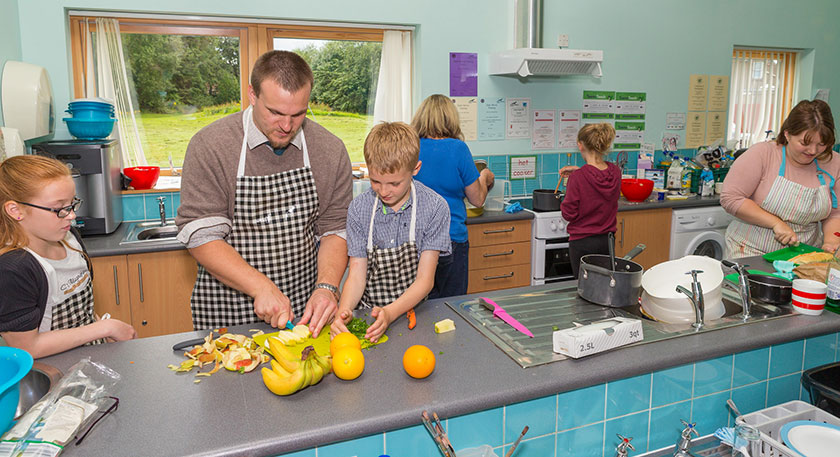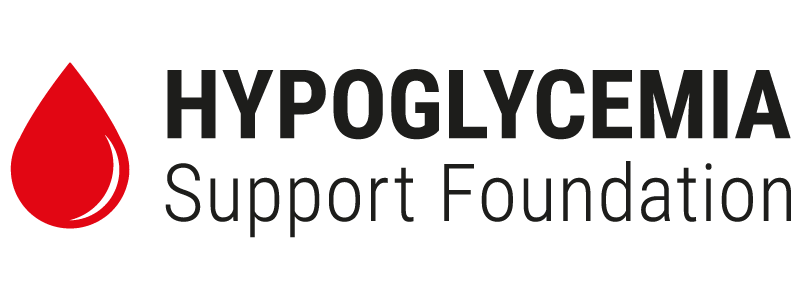
Mobile Kitchens and Model Programs Provide Essential Context for Teaching Nutrition in the Classroom
Real Food is Made in Real Kitchens – Kids Need to Know That
Nutrition textbooks will tell you need to eat your fruits, vegetables, whole grains, proteins, etc…, but textbook education does not teach children the essential lessons of living healthy and eating well. There is something powerful and life changing when children are given hands on education that is fun and applicable to their lives. To illustrate this point, a coach does not teach athletes how to perform by means of a textbook and chalkboard. There is some of that, but the real essence of learning comes when athletes practice and perfect their sport, working together as a team. The same principle should be used to teach children about health and nutrition.
Wolfram Alderson, a lifelong advocate for food system change, and CEO for the Hypoglycemia Support Foundation, states: “When teaching nutrition, context is everything. You simply shouldn’t teach nutrition just from books. Separating real life food experiences from nutrition has a name: nutritionism – essentially the idea of reducing nutrition to abstractions and constituents and approaching food as if it is simply a sum of many parts. Nutrition must be taught holistically – in the context of real food – or you end up believing that food can come from factories and chemistry labs. Nutritionism is why there are over 10,000 items approved to be added to our food supply, and most of them are not food, but rather processed food additives. Do we really want to eat Butylated Hydroxyanisole? It is approved to be in our food (Generally Regarded as Safe), so it is likely we are eating it already. The point is that when you separate the ideas of nutrition and food, it becomes possible to turn your food supply into a chemical dump ground. Context is everything.”
Most kids today do not know where food comes from, how to cook, live well and eat healthy. The modern American food landscape is flooded with meaningless labels such as “low-fat” and “low carb” – essentially jargon that the processed food industry uses to market unhealthy products. If it has a label, it is a “warning label.” We know that “a calorie is not a “calorie,” and macronutrient ratios and “energy balance” issues are not at the heart of the problem. Marketing schemes and conflicting opinions that distort the meaning of good nutrition, and consumers are flooded with misinformation which limits the ability to live well and eat healthy. Unfortunately, many processed foods contain excessive amounts of sugar and unhealthy “food additives” that sabotage satiety signals and taste buds, which causes millions of people to be addicted to foods that create metabolic dysfunction and chronic disease.
It is becoming a mind boggling task to maneuver through the deceptions of food marketing and what it means to eat well.
So what would be the best way to teach students nutrition in the right context and still fulfill the standards of the Common Core? …Cooking! Cooking provides a medium for nutrition education, knowledge of where food comes from (and should not come from), skills to prepare wholesome meals, and trains the palate to crave healthy foods. But, how do we bring the kitchen to the classroom? It is time to modernize school kitchens, says Chef Ann, with the Chef Ann Foundation.
 Carolyn Federman, Founder of Charlie Cart, says “Cooking provides an ideal platform to illustrate and reinforces science, math, literacy and cultural studies. In the Charlie Cart curriculum, each lesson is connected to an academic subject, including Common Core English Language Arts and Math, and Next Generation Science standards. The academics are integrated into the cooking activity, and a specific concept is reinforced throughout the lesson. For example, with herb scones, students learn why it is important to blend flour and leavening completely when making dough.”
Carolyn Federman, Founder of Charlie Cart, says “Cooking provides an ideal platform to illustrate and reinforces science, math, literacy and cultural studies. In the Charlie Cart curriculum, each lesson is connected to an academic subject, including Common Core English Language Arts and Math, and Next Generation Science standards. The academics are integrated into the cooking activity, and a specific concept is reinforced throughout the lesson. For example, with herb scones, students learn why it is important to blend flour and leavening completely when making dough.”
Carolyn Federmen founded the Charlie Cart project to create a  mobile kitchen designed for classroom teaching. The Charlie Cart project integrates cooking/nutrition curriculum into the Common Core standards, and the pilot schools have already seen dramatic results in the children’s behavior, attendance, and willingness to try new foods. After great success with their pilot schools, the Charlie Cart project officially launched January 2016. Federman and her team have worked hard to make the Charlie Cart curriculum easy and applicable for teachers and fun and engaging for the children. Federman says “the introduction of ingredients is a key part of the lessons and is a time when teachers and students can make connections to current events, personal stories, health and environment, and academic studies.”
mobile kitchen designed for classroom teaching. The Charlie Cart project integrates cooking/nutrition curriculum into the Common Core standards, and the pilot schools have already seen dramatic results in the children’s behavior, attendance, and willingness to try new foods. After great success with their pilot schools, the Charlie Cart project officially launched January 2016. Federman and her team have worked hard to make the Charlie Cart curriculum easy and applicable for teachers and fun and engaging for the children. Federman says “the introduction of ingredients is a key part of the lessons and is a time when teachers and students can make connections to current events, personal stories, health and environment, and academic studies.”

 Stephen Ritz, a teacher in Bronx, New York, provides another exceptional testimony of how fun and hands on nutrition education not only gives the kids knowledge, but changes their lives. Ritz started the Green Bronx Machine as an after-school program for high school students, which has evolved into K-12+ model that is fully integrated into the core curriculum. The Green Bronx Machine has had amazing success with kids learning lifelong skills of growing sustainable gardens and kids enjoying healthy community grown foods. The Green Bronx machine has just launched the National Wellness Center, which includes a mobile kitchen made by Stephenson Custom Case equipped with sinks, cabinets, refrigerator, and the essentials of a normal kitchen.
Stephen Ritz, a teacher in Bronx, New York, provides another exceptional testimony of how fun and hands on nutrition education not only gives the kids knowledge, but changes their lives. Ritz started the Green Bronx Machine as an after-school program for high school students, which has evolved into K-12+ model that is fully integrated into the core curriculum. The Green Bronx Machine has had amazing success with kids learning lifelong skills of growing sustainable gardens and kids enjoying healthy community grown foods. The Green Bronx machine has just launched the National Wellness Center, which includes a mobile kitchen made by Stephenson Custom Case equipped with sinks, cabinets, refrigerator, and the essentials of a normal kitchen.

Stephenson Custom Case Mobile Kitchen
The National Wellness Center seeks to give students the resources, education and tools they need to become healthy themselves and then to expand their skills knowledge and abilities among their family and communities.
The kids learn to apply their nutrition knowledge and cooking skills to everyday life when teachers use the mobile kitchen or a kitchen classroom. This hands-on dynamic education is fun and inspires the students to want to learn more and apply their knowledge. Together, knowledge and skills equip these students to change the standard American diet (or SAD diet) in their family and community.
These are just a few examples of efforts in the U.S. to teach nutrition in the context of cooking with real food. Stay tuned for more features on model solutions for teaching nutrition.
 Author and Nutrition Ambassador: Alexandria Van Zandt graduated from UC Davis with a BS in clinical nutrition. She is passionate about nutrition physiology and wants to find better ways to personalize nutrition based on the individual’s needs.
Author and Nutrition Ambassador: Alexandria Van Zandt graduated from UC Davis with a BS in clinical nutrition. She is passionate about nutrition physiology and wants to find better ways to personalize nutrition based on the individual’s needs.

